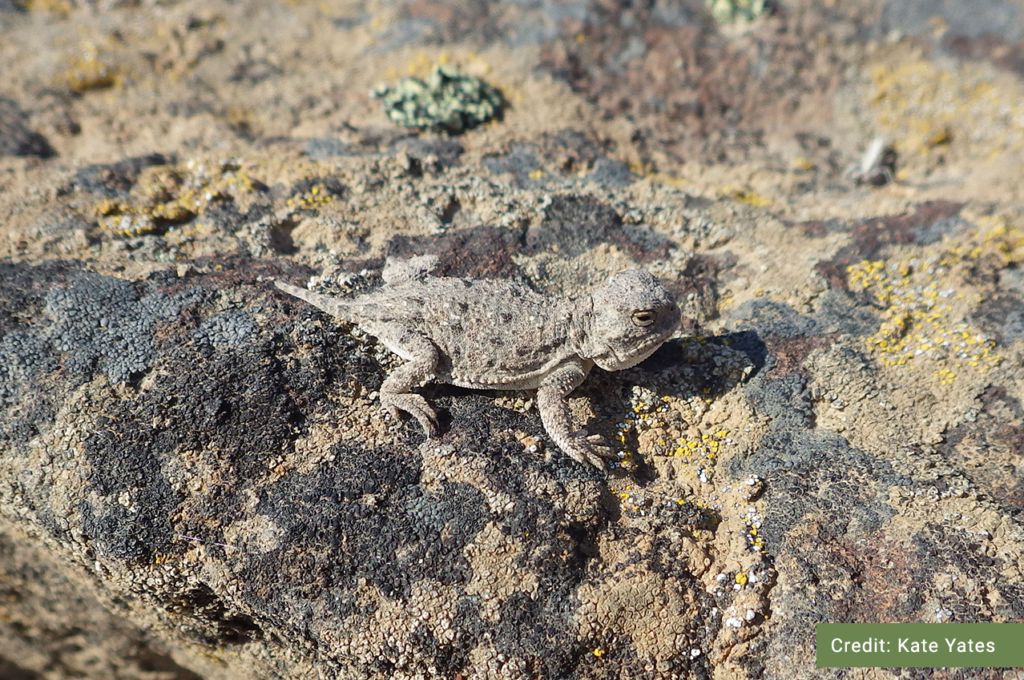Credit: Belinda Lo
Pygmy Short-horned Lizard
Phrynosoma douglasii douglasii
Description
Other names: Pigmy Short-horned Lizard, Phrynosoma douglasii
Listen to the Indigenous words for “lizard” here!

Distribution
Habitat
Reproduction

Diet
Pygmy Short-horned Lizards are diurnal predators and use a sit-and-wait style of hunting. They will partially burrow themselves into the sand and wait for prey to pass by before lunging to grab it. Their major food source is ants, but they will feed on most insects and invertebrates that cross their path. NeonatesDefinition:Young. feed almost exclusively on ants (around 90% of their diet), while adults feed on fewer ants (around 60% of their diet) and more other insects such as Coleopterans.

Conservation Status
Global: G5 (2005)
COSEWIC: XT
SARA:1-XX (2003)
Provincial: SX (2018)
BC List: Red
Learn more about conservation status rankings here
Threats

Did You Know?
Pygmy Short-horned Lizards are considered extirpated from British Columbia, but with such masterful camouflage, they may still be out there. Spotting a Pygmy Short-horned Lizard in British Columbia would certainly earn the observer 15 minutes of fame!
Species Account Author: Marcus Atkins
B.C. Conservation Data Centre. 2005. Species Summary: Phrynosoma douglasii. B.C. Minist. of Environment. Available: https://a100.gov.bc.ca/pub/eswp/ (accessed May 28, 2021).
B.C. Conservation Data Centre. 2011. Conservation Status Report: Phrynosoma douglasii. B.C. Minist. of Environment. Available: https://a100.gov.bc.ca/pub/eswp/ (accessed May 28, 2021).
B.C. Conservation Data Centre. 2021. BC Species and Ecosystems Explorer. B.C. Minist. of Environ. Victoria, B.C. Available: https://a100.gov.bc.ca/pub/eswp/ (accessed May 28, 2021).
COSEWIC. 2007. COSEWIC assessment and update status report on the Pygmy Short-horned Lizard Phrynosoma douglasii in Canada. Committee on the Status of Endangered Wildlife in Canada. Ottawa. vi + 24 pp. (www.sararegistry.gc.ca/status/status_e.cfm).
http://linnet.geog.ubc.ca/efauna/Atlas/Atlas.aspx?sciname=Phrynosoma%20douglasii&ilifeform=41
https://www.bcreptiles.ca/lizards/pigmyshorthorn.htm

